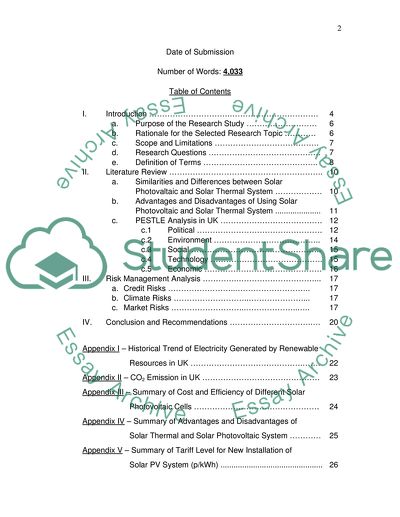Cite this document
(Market Risk Analysis on Solar Thermal vs. Solar Photovoltaic System in Research Paper - 1, n.d.)
Market Risk Analysis on Solar Thermal vs. Solar Photovoltaic System in Research Paper - 1. Retrieved from https://studentshare.org/marketing/1748340-industry-risk-analysis
Market Risk Analysis on Solar Thermal vs. Solar Photovoltaic System in Research Paper - 1. Retrieved from https://studentshare.org/marketing/1748340-industry-risk-analysis
(Market Risk Analysis on Solar Thermal Vs. Solar Photovoltaic System in Research Paper - 1)
Market Risk Analysis on Solar Thermal Vs. Solar Photovoltaic System in Research Paper - 1. https://studentshare.org/marketing/1748340-industry-risk-analysis.
Market Risk Analysis on Solar Thermal Vs. Solar Photovoltaic System in Research Paper - 1. https://studentshare.org/marketing/1748340-industry-risk-analysis.
“Market Risk Analysis on Solar Thermal Vs. Solar Photovoltaic System in Research Paper - 1”, n.d. https://studentshare.org/marketing/1748340-industry-risk-analysis.


